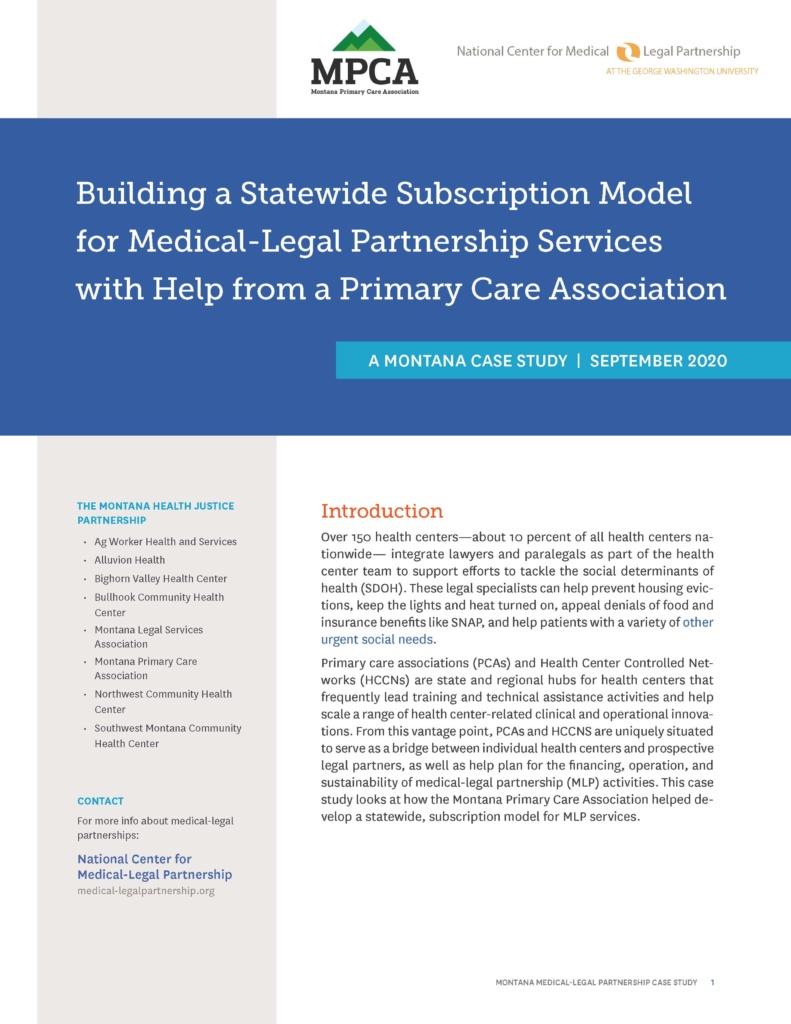Organizations in Montana and Florida are working to coordinate medical-legal partnership services across their states. Two new reports examine their different approaches.
Building a statewide subscription model for MLP services in Montana
 By National Center for Medical-Legal Partnership & Montana Primary Care Association
By National Center for Medical-Legal Partnership & Montana Primary Care Association
Read the case study, “Building a Statewide Subscription Model for Medical-Legal Partnership Services in Montana with Help from a Primary Care Association”
September 2020
Primary care associations (PCAs) and Health Center Controlled Networks (HCCNs) are state and regional hubs for health centers that frequently lead training and technical assistance activities and help scale a range of health center-related clinical and operational innovations. From this vantage point, PCAs and HCCNS are uniquely situated to serve as a bridge between individual health centers and prospective legal partners, as well as help plan for the financing, operation, and sustainability of medical-legal partnership (MLP) activities. This case study looks at how the Montana Primary Care Association helped develop a statewide, subscription model for MLP services.
Building a statewide Florida MLP Network
 By Community Legal Services of Mid-Florida, Inc.
By Community Legal Services of Mid-Florida, Inc.
Read the report, “Building a Statewide Medical-Legal Partnership Network: A Florida Case Study”
August 2020
Much of the growth in the medical-legal partnership (MLP) movement has been driven by passionate advocates—in both the legal and health care sectors—at the local level. MLP programs are often initiated, structured and implemented based on community needs, funding incentives and restrictions, local culture, and relationships among partners. Yet, as MLPs proliferate across the Unites States, MLP advocates are focusing on building state and regional networks to better coordinate efforts geographically, improve communication and collaboration among MLPs and organize efforts around sustainable investment and policy strategies. This report examines Florida’s statewide MLP network, including its history, planning process, statewide activities, and some of the important lessons that can help other states in their statewide efforts.
